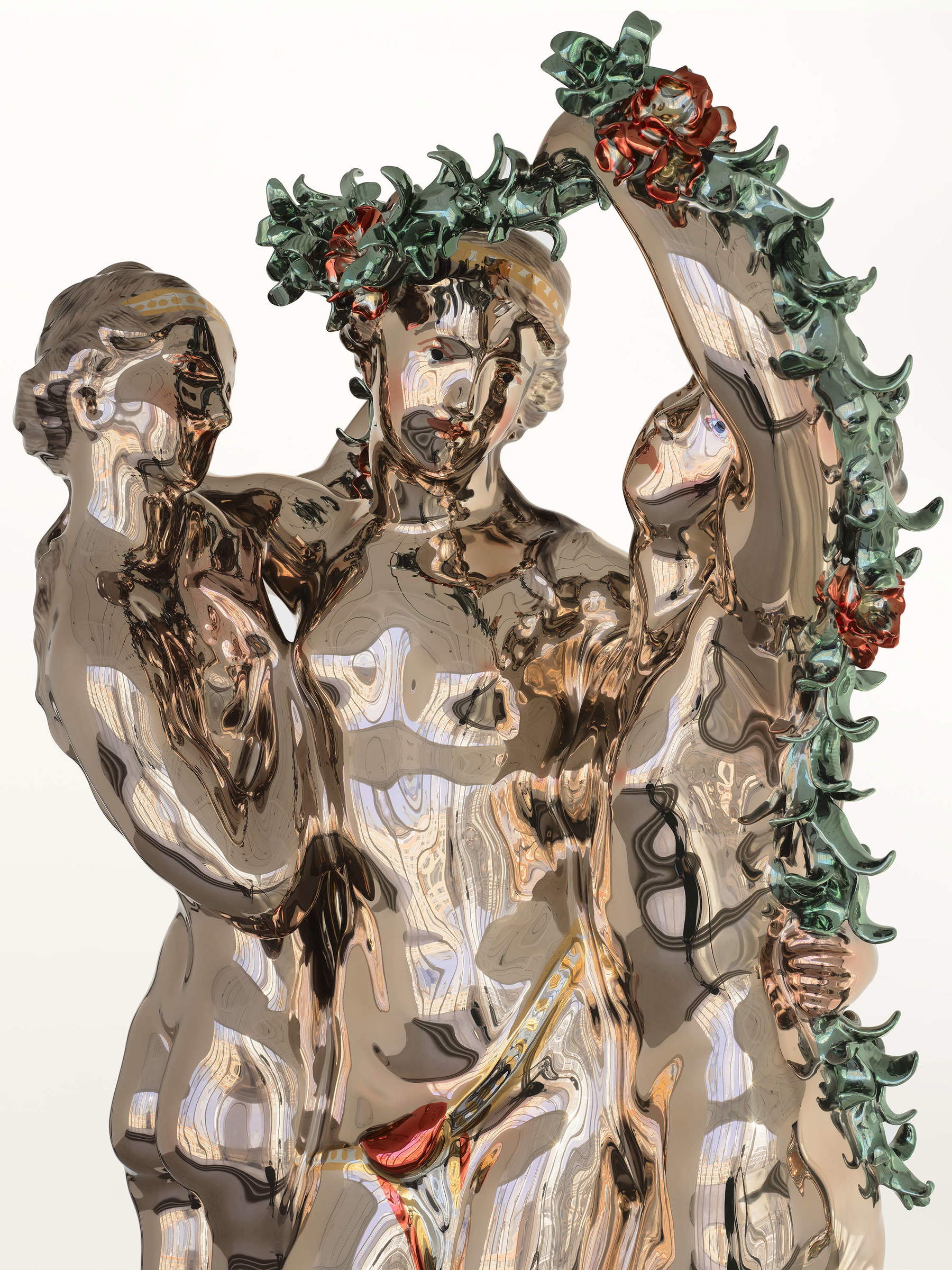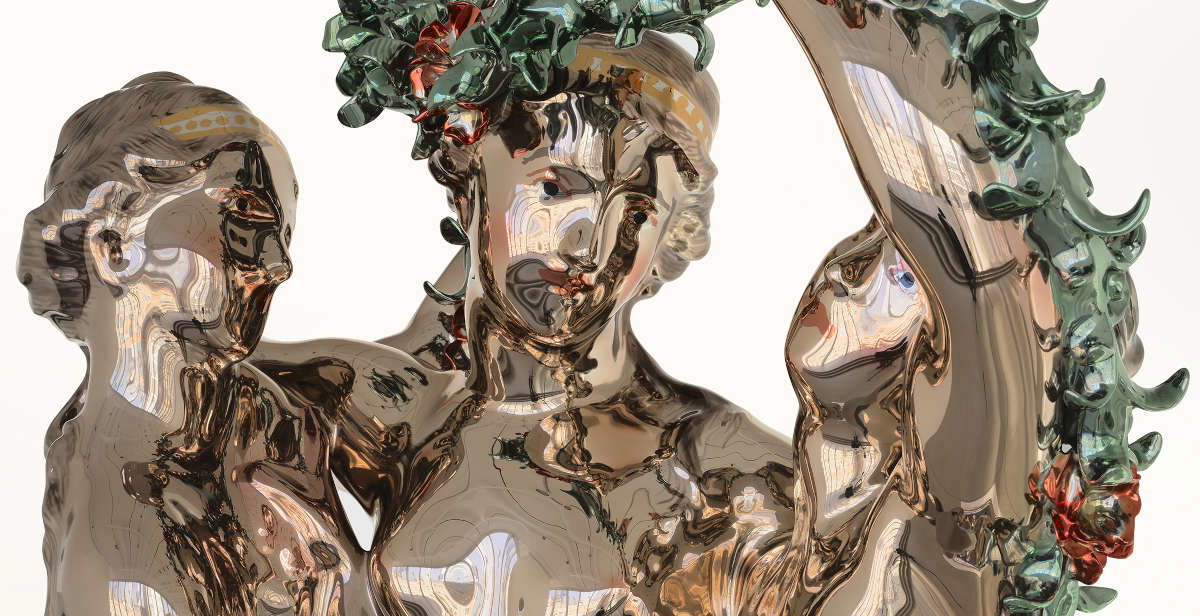It is one of the most anticipated returns to contemporary art. The Gagosian Gallery announces the opening of Porcelain Series, Jeff Koons’ new exhibition scheduled to open Nov. 13, 2025 at the gallery space at 541 West 24th Street in New York City. The exhibition marks the American artist’s return to the renowned gallery after a four-year absence and is the first presentation entirely devoted to the “Porcelain” series, a cycle of sculptures and paintings that summarizes Koons’ aesthetic and philosophy, placing himself in dialogue with the history of visual culture and its contemporary declinations.
Conceived between the ancient and the everyday, Porcelain Series explores how art objects can transform themselves into luxurious and metaphysical icons. Behind the glittering surface of the works, Koons invites the viewer to question the concepts of beauty, desire and transcendence, recurring themes in his poetics.
The sculptures in the Porcelain series are made of mirror-polished stainless steel and coated with layers of transparent color, a technique that gives them the precious appearance of porcelain and a reflective sheen. The subjects are derived from figurines produced between the 18th and early 20th centuries: mythological deities such as Diana and Venus, symbolic animals such as a deer juxtaposed with a dog, and pairs of lovers depicted in a timeless embrace.
The work Three Graces (2016-2022), a monumental sculpture made of mirrored steel with a transparent coating, is one of the most emblematic examples of the project. As in much of Koons’ work, the reflective surface becomes a conceptual device: the viewer is mirrored in it, becoming part of the work and its visual space.
The production of these sculptures requires a complex and highly sophisticated technical process, combining digital and craft skills. Each piece is created from a careful digitization of the original models, followed by a long phase of mechanical engineering, milling, laser tracing, painting and polishing. This process results in perfectly polished surfaces, in which the physical strength of steel is combined with its ability to reflect light. The sculptures created in this way not only capture attention by their visual splendor, but also invite reflection on the persistence of the image and the interaction between object, observer and time.

Alongside the sculptures, the exhibition also features new paintings from the Porcelain series, in which Koons transports the principles of material reflection to the pictorial plane. Each canvas arises from a layering of visual layers. The first layer depicts naturalistic elements - sea waves, clouds, forests - painted with extreme realistic precision. On this base, the artist intervenes with broad gestural, dense and dynamic brushstrokes, to which he adds a layer of aluminum leaf applied with a mission technique, which restores metallic luminosity and tactile depth.
Through the aluminum leaf emerge images from Renaissance and Counter-Reformation engravings, such as Satyr Whipping a Nymph (1590-1595) and Nymph, Putto, and a Small Satyr (1590-1595) by Agostino Carracci, The Judgment of Paris (1513-1515) by Marcantonio Raimondi da Raffaello, and Neptune and Caenis (1580) by Johann Sadeler. Koons recovers these subjects to reflect on the continuity of images across the centuries, relating the European figurative tradition to the visual culture of the present.
Each painting is the result of a complex construction, in which Koons’s gestural painting is interwoven with the layering of motifs and materials. The result is an image that alternates between energy and stillness, transparency and opacity, evoking the sensual brilliance of porcelain and, at the same time, the conceptual depth of history painting.
In commenting on the exhibition, Jeff Koons said, "The Porcelain series is in dialogue with the art of antiquity to the present day. Embodied in it is faith in humanity and civilization, in our ability to transcend." The artist thus wants to emphasize the spiritual dimension that runs through the entire production, in which the reflective object and the perfect surface become tools to investigate the tension between body and spirit, between matter and idea.
Gagosian Gallery presents Porcelain Series as a milestone in Koons’ career, following years in which the artist worked on monumental projects and large-scale installations. The exhibition marks a return to direct dialogue with painting and sculpture and a reflection on the craft tradition of art, filtered through the techniques of industrial production.
As in many of his previous cycles, from Celebration to Antiquity, in Porcelain Koons weaves together popular and cultured elements, rethinking the very notion of artistic “luxury.” The shiny surfaces and precious materials reference the culture of consumption and the desired object, but also the sacredness of the image, its ability to endure over time. The exhibition at Gagosian, organized in several rooms, will offer an overview of the dialogue Koons weaves between the ancient and the contemporary, between art as ornament and art as a vehicle for thought.
 |
| Jeff Koons returns to Gagosian: Porcelain series exhibition coming soon |
Warning: the translation into English of the original Italian article was created using automatic tools. We undertake to review all articles, but we do not guarantee the total absence of inaccuracies in the translation due to the program. You can find the original by clicking on the ITA button. If you find any mistake,please contact us.